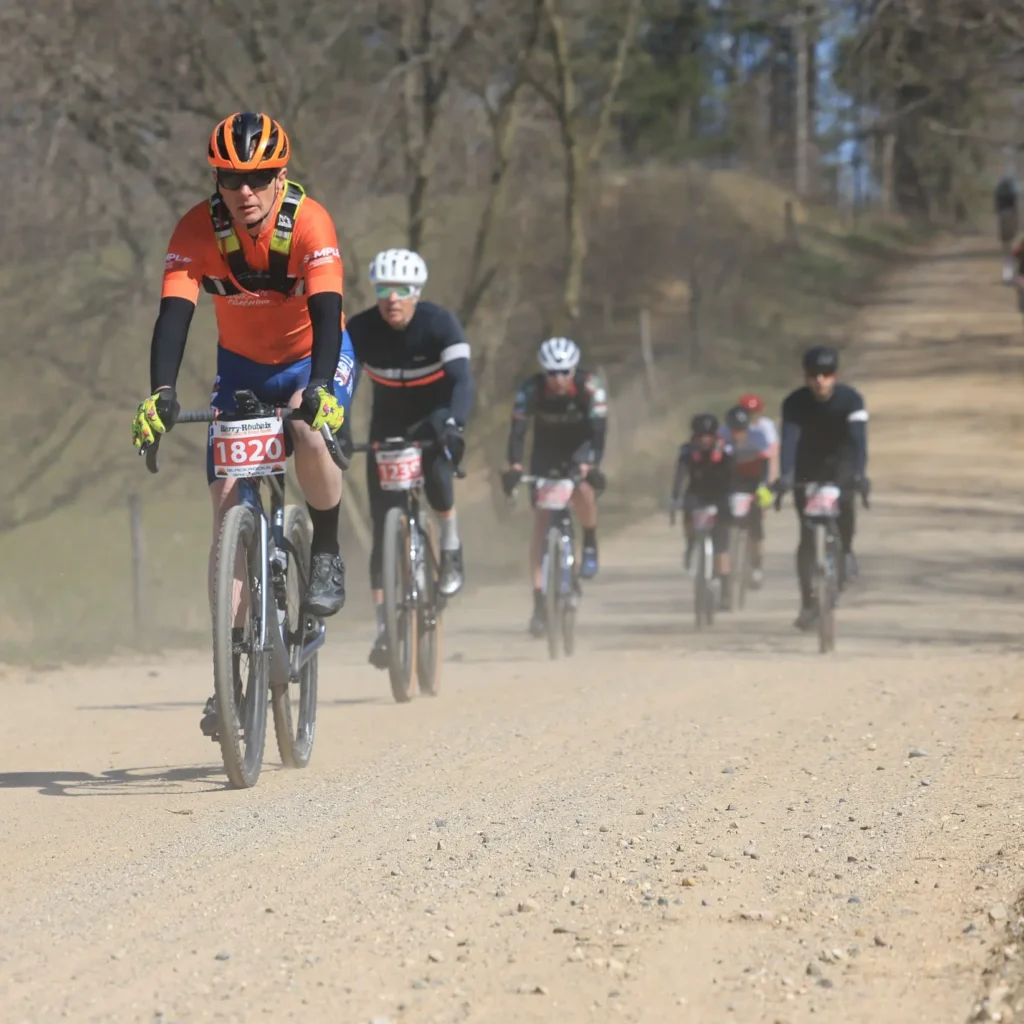
I still remember getting my first heart rate monitor back in the late 1980s.
It was a watch that I wrapped around my handlebars and included a chest strap.
The heart rate monitor changed everything about how I was training at the time.
And I remember the beginning of the power meter in cycling, when friends said we no longer need heart rate since we have this measure of external load.
But is heart rate (HR) still a useful guide for cyclists and runners in the age of power meters, wearables, and AI-driven coaching?
We’re going to discuss the benefits, limitations, and science behind using HR as a training tool, and how to use it wisely in your endurance plan.
The History: Why We Started Using Heart Rate
Heart rate-based training emerged in the 1970s and 80s as endurance athletes began to embrace sports science.
Coaches and physiologists discovered that HR could be a metric for internal load, or how hard your body is working in response to the training.
From Dr. Phil Maffetone’s aerobic threshold formula (180 minus age) to Dr. Stephen Seiler’s polarized training research, HR became a foundation for structuring endurance workouts around aerobic development.
While heart rate is not necessarily the perfect tool for measuring intensity sessions, it is what I prescribe to my athletes for Zone 1 and 2 endurance training.
Most training programs still include heart rate zones, typically based on:
- A percentage of maximum heart rate (e.g., Zone 2 = 60–70% HR max)
- Lactate threshold heart rate (more accurate, if tested)
- Aerobic threshold (like MAF method)
Benefits of Heart Rate as a Training Metric
✅ 1. Reflects Internal Load
Heart rate shows how your cardiovascular system responds to training.
Unlike external metrics like pace or power, HR accounts for fatigue, dehydration, stress, and sleep.
This makes it useful for monitoring how your body feels, not just what it’s doing.
✅ 2. Ideal for Zone 2 and Endurance Building
Heart rate is particularly useful for staying in lower-intensity aerobic zones.
For endurance athletes trying to build a strong base, HR-guided training helps prevent “going too hard on easy days.”
Studies support this approach.
For example, Esteve-Lanao et al. (2007) found that athletes who spent more time in low HR zones improved more than those training at moderate intensities.
✅ 3. Affordable and Accessible
Unlike power meters or lactate testing, heart rate monitors are affordable and widely available, a key reason many everyday athletes still rely on HR training.
Drawbacks of Heart Rate Training
⚠️ 1. Lag During High-Intensity Efforts
Heart rate takes time to respond to intensity, often 30 to 60 seconds.
This makes it less useful for short intervals or sprints. Power or pace is more precise in those situations.
So if my athletes are doing 30/30s, for example, heart rate won’t come up until the second or later intervals.
⚠️ 2. Sensitive to External Stressors
HR can be influenced by:
- Heat or dehydration
- Caffeine
- Poor sleep
- Altitude
- Psychological stress
- Fatigue
This means your HR might be higher (or lower) on any given day, even if the effort is the same.
⚠️ 3. Doesn’t Measure Output
Heart rate shows effort, not results.
On a hot or stressful day, for example, your HR might be elevated even if you’re running or riding slower than usual.
For cyclists in particular, pairing HR with power data provides a more complete picture.
⚠️ 4. HR Drift
On long rides or runs, your heart rate may gradually rise despite a consistent pace or power, a phenomenon called cardiac drift or decoupling.
This can make HR-based pacing less reliable on extended efforts.
This decoupling can also cause you to train above zone 2 as heart rate increases with the same power or pace.
How to Use Heart Rate Training Effectively
If you want to use HR wisely in your training plan, consider these tips:
🔹 Use It for Aerobic Workouts
Keep most of your weekly training in Zone 1 and 2 HR to build a strong aerobic base and avoid mid-zone burnout.
I base any endurance ride, including rides that have cadence work, on heart rate.
🔹 Don’t Rely on HR Alone
Combine heart rate with perceived exertion, power (for cyclists), or pace (for runners).
Use tools like TrainingPeaks or Athletica to blend internal and external load tracking.
🔹 Validate Your HR Zones
Age-based formulas are often inaccurate.
Maffetone’s formula gives you a baseline and a place to start.
Monitoring your breathing is another way to validate your heart rate.
If you can easily hold a conversation or sing a song, you’re in Zone 1 or 2.
Do a field test (like a 30-minute time trial) or a lab-based lactate threshold test to determine your actual HR zones.
🔹 Account for Daily Variability
If your HR is unusually high or low during a session, consider whether other factors (fatigue, illness, caffeine) are influencing it.
Use that feedback to adjust training or recovery.
For example, if you can’t get your heart rate up during intervals, it may be a sign that you are fatigued and should take the day off.
Heart Rate is Still a Valuable Tool, But Use It Wisely
Heart rate training remains a relevant and powerful tool for endurance athletes, especially when used to control intensity in aerobic sessions and monitor overall stress.
And it works best when combined with other metrics, not as a standalone guide.
By understanding its strengths and limitations, you can use HR to train smarter, recover better, and race stronger.
Here are Three Things to Know About Using Heart Rate for Training
1. Heart Rate Is a Valuable Tool for Monitoring Internal Load and Aerobic Training
Use heart rate to guide low-intensity, aerobic workouts (like Zone 2 training). It offers insight into how the body responds to stress, not just how much work is being done
2. Heart Rate Has Limitations, Especially for High-Intensity or Short Intervals
HR lags behind changes in intensity and is heavily influenced by external factors like heat, hydration, and stress.
3. Research Supports HR as Part of a Broader Toolkit — Not a Standalone Metric
The most effective training approaches combine HR with other data points like RPE, power, or pace to accurately capture both internal and external load.
Need more?
Unlock the secrets to mastering gravel racing with our FREE Guide to Gravel Racing! Get yours here.
SIGN UP FOR A FREE Virtual Coffee so we can discuss your goals, ask questions, and talk about making your endurance training more effective, fun, and Simple.
Paul Warloski is a:
- USA Cycling Level 1 Advanced Certified Coach
- RRCA Running Coach
- Training Peaks Level 2 Coach
- RYT-200 Yoga Instructor
- Certified Personal Trainer
- Certified Nutrition Advisor




